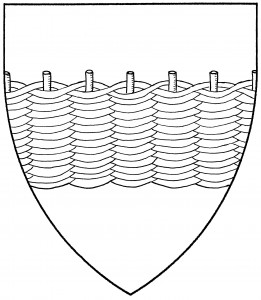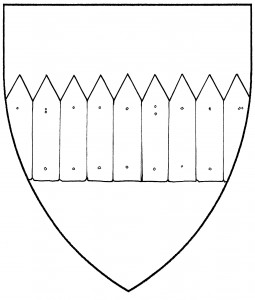A fence is an enclosure around a field or piece of land, less massive or permanent than a wall, and usually made of wood or similar material. In period armory, the typical form was a wattle fence, drawn as wicker branches woven around posts; this form is found in the arms of Stapfer, 1605 [Siebmacher 199]. The wattle fence is also blazoned a “weir” or “yair”, which in period was submerged in streams and used to trap fish; it’s found in the canting arms of Zare, 1542 [Lindsay].
Another form of fence would be built from “park pales”: closely set pointed stakes, modernly called a picket fence. We find a period example of a park-pale fence in the arms of Zinhofen (sp.?), from the Hofkleiderbuch of Duke Wilhelm IV, early 16th C. [BSB Cgm.1952, image 268; see also Parker 442]. See also edifice.
George Warde bears: Vert, a weir Or.
Edelgard Erzsébet von Württemberg bears as a badge: Between the peaks of a mountain of two peaks argent issuant from park pales gules a hurst of trees proper.

